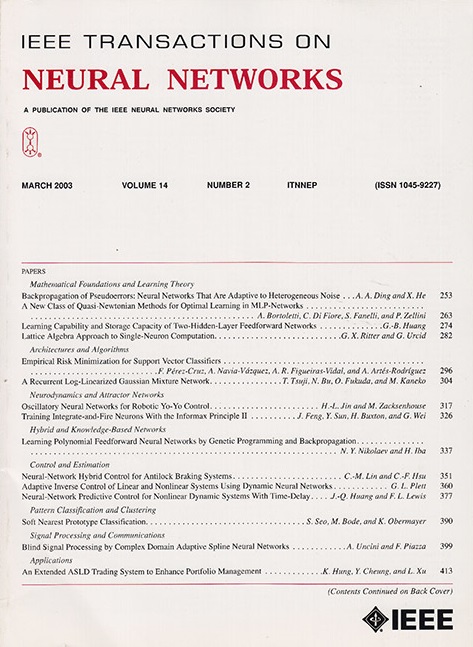Stacked Ensemble Deep Random Vector Functional Link Network With Residual Learning for Medium-Scale Time-Series Forecasting
IF 8.9
1区 计算机科学
Q1 COMPUTER SCIENCE, ARTIFICIAL INTELLIGENCE
IEEE transactions on neural networks and learning systems
Pub Date : 2025-02-11
DOI:10.1109/TNNLS.2025.3529219
引用次数: 0
Abstract
The deep random vector functional link (dRVFL) and ensemble dRVFL (edRVFL) succeed in various tasks and achieve state-of-the-art performance compared with other randomized neural networks (NNs). However, existing edRVFL structures need more diversity and error correction ability in an independent network. Our work fills the gap by combining stacked deep blocks and residual learning with the edRVFL. Subsequently, we propose a novel dRVFL combined with residual learning, ResdRVFL, whose deep layers calibrate the wrong estimations from shallow layers. Additionally, we propose incorporating a scaling parameter to control the scaling of residuals from shallow layers, thus mitigating the risk of overfitting. Finally, we present an ensemble deep stacking network, SResdRVFL, based on ResdRVFL. SResdRVFL aggregates multiple blocks into a cohesive network, leveraging the benefits of deep learning and ensemble learning. We evaluate the proposed model on 28 datasets and compare it with the state-of-the-art methods. The comparative study demonstrates that the SResdRVFL is the best-performing approach in terms of average ranking and errors based on 28 datasets.基于残差学习的叠加集成深度随机向量函数链接网络中尺度时间序列预测
与其他随机神经网络(nn)相比,深度随机向量功能链接(dRVFL)和集成dRVFL (edRVFL)在各种任务中取得了成功,并取得了最先进的性能。然而,现有的edRVFL结构在独立网络中需要更大的多样性和纠错能力。我们的工作通过将堆叠深度块和剩余学习与edRVFL相结合来填补这一空白。随后,我们提出了一种结合残差学习的新dRVFL,即ResdRVFL,它的深层校正了浅层的错误估计。此外,我们建议加入一个缩放参数来控制浅层残差的缩放,从而降低过拟合的风险。最后,我们提出了基于ResdRVFL的集成深度叠加网络SResdRVFL。SResdRVFL将多个块聚合成一个内聚网络,利用深度学习和集成学习的优势。我们在28个数据集上评估了所提出的模型,并将其与最先进的方法进行了比较。对比研究表明,在28个数据集的平均排名和误差方面,SResdRVFL是表现最好的方法。
本文章由计算机程序翻译,如有差异,请以英文原文为准。
求助全文
约1分钟内获得全文
求助全文
来源期刊

IEEE transactions on neural networks and learning systems
COMPUTER SCIENCE, ARTIFICIAL INTELLIGENCE-COMPUTER SCIENCE, HARDWARE & ARCHITECTURE
CiteScore
23.80
自引率
9.60%
发文量
2102
审稿时长
3-8 weeks
期刊介绍:
The focus of IEEE Transactions on Neural Networks and Learning Systems is to present scholarly articles discussing the theory, design, and applications of neural networks as well as other learning systems. The journal primarily highlights technical and scientific research in this domain.
 求助内容:
求助内容: 应助结果提醒方式:
应助结果提醒方式:


